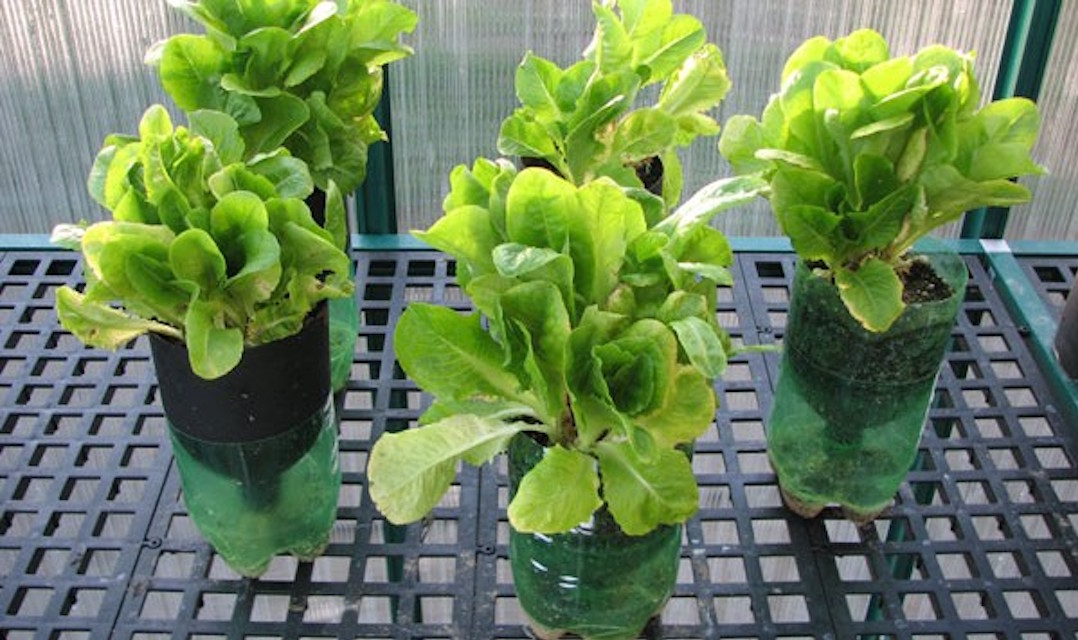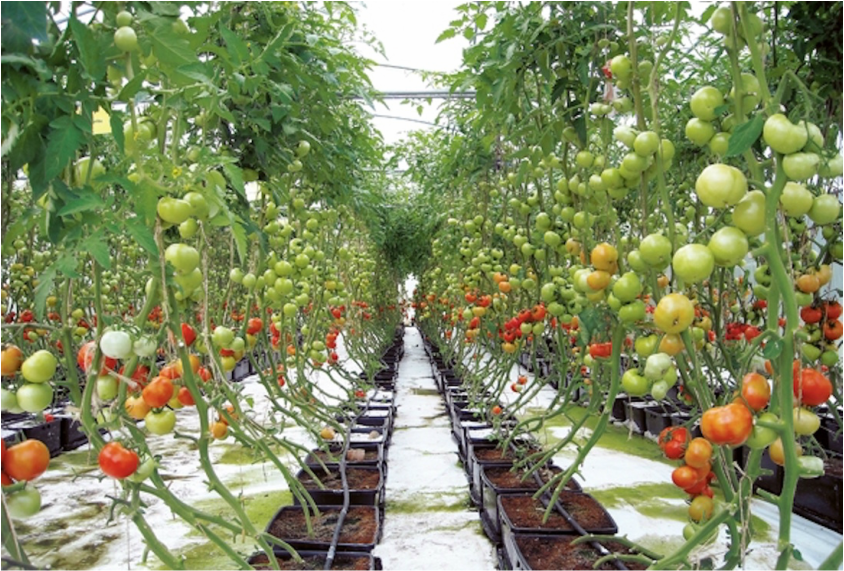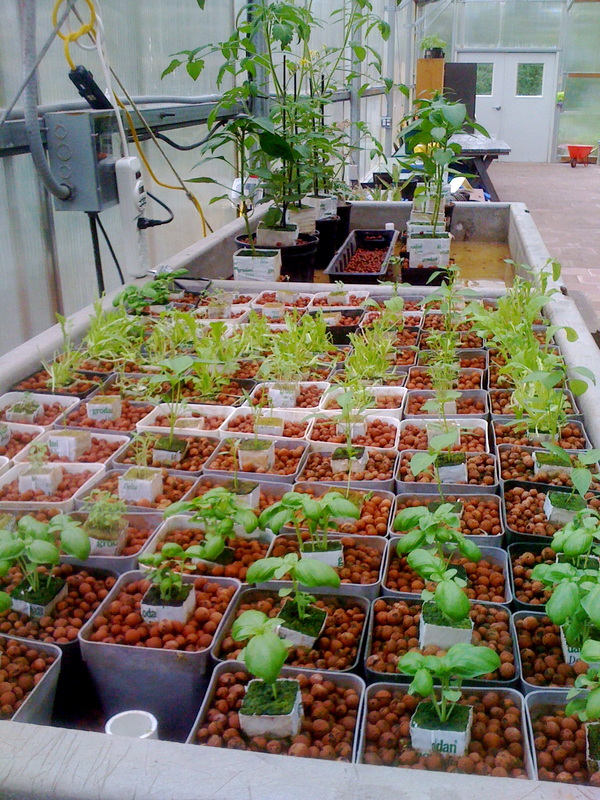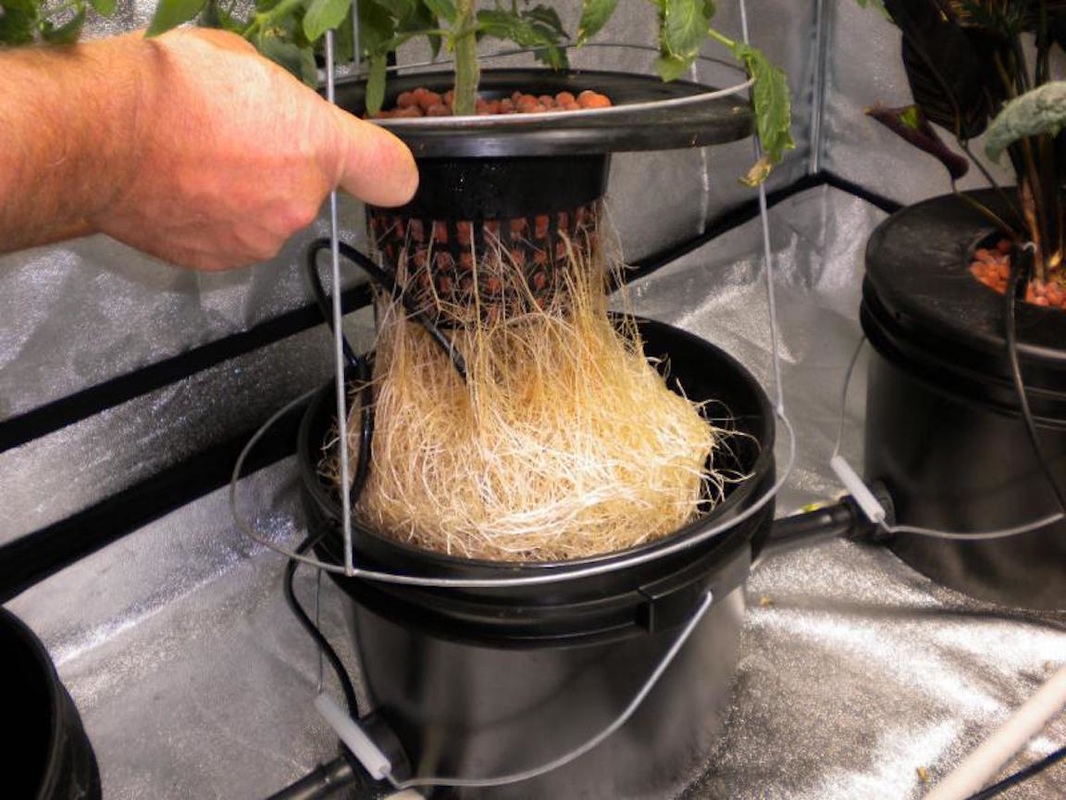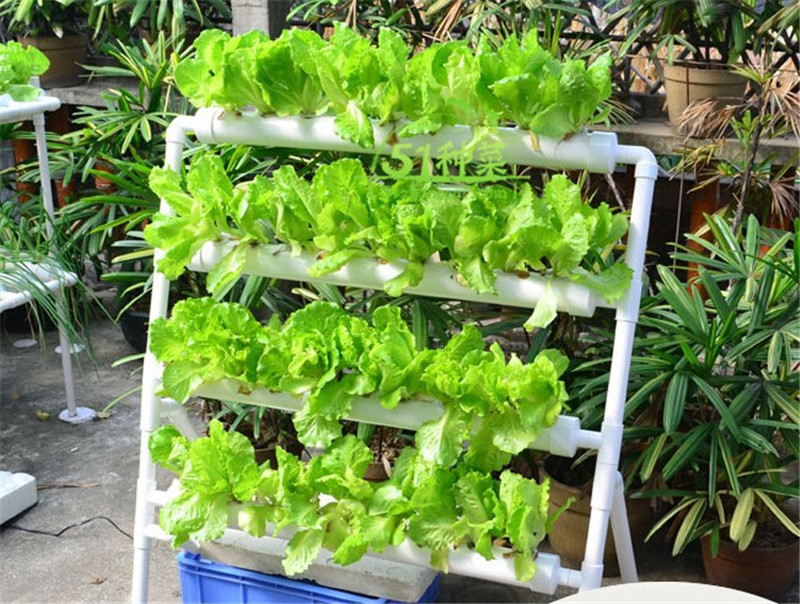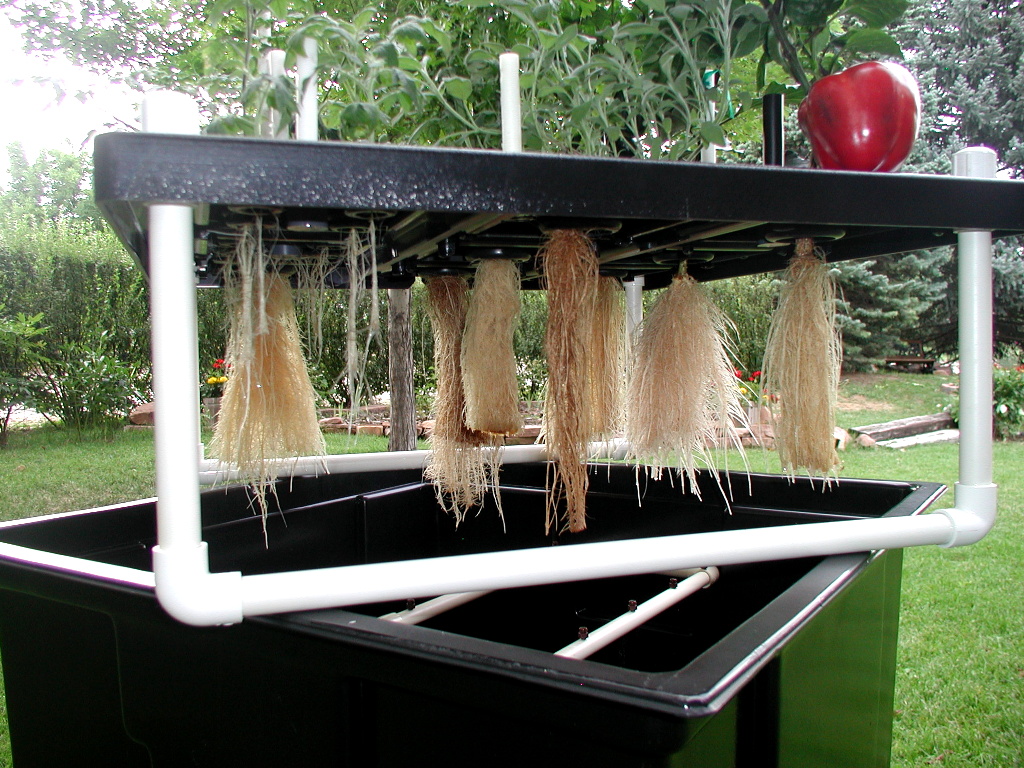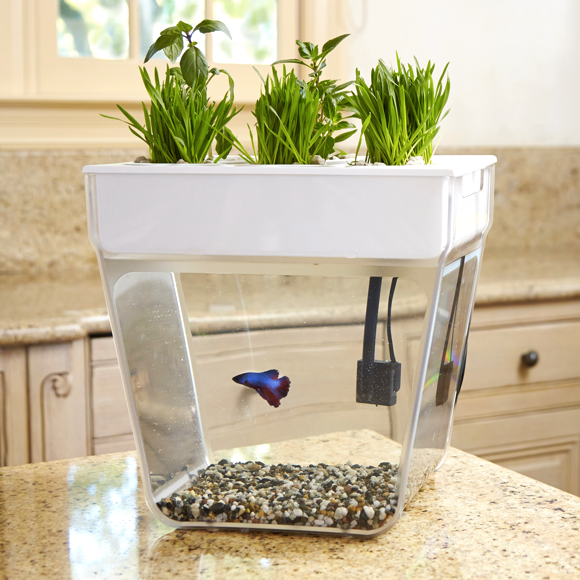Hydroponic Systems
WHAT IS HYDROPONICS?
Hydroponics is the art of growing plants without soil. With hydroponics, the plants are grown in an inert growing medium (rockwool, coconut fiber, perlite, gravel, clay pebbles, vermiculite) and a perfectly balanced, pH adjusted nutrient solution is delivered to the roots in a highly soluble form. This allows the plant to uptake its food with very little effort as opposed to using soil where the roots must search out the nutrients and extract them. The energy expended by the roots in this process is energy better spent on vegetative growth, fruit and flower production. These systems differ primarily in structure but can all be completely automated with little maintenance if done correctly. Each of the following six systems utilizes a unique method to deliver nutrients to the growing plants. All of these can be applied on a small or large scale.
WICK
Wick
Just as the name implies, this system uses one or several wicks to draw nutrient solution from a reservoir into a sterile medium such as coco coir (ground up coconut skins), peat moss or rockwool. A wick system is cheap and simple to set up and doesn't require any pumps or elaborate drainage systems. Plants grow directly in the medium and take up the nutrients as needed. These systems are ideal for small set-ups such as an indoor kitchen garden or collection of house plants. It is not, however, the most efficient delivery system and may not be able to adequately keep up with the needs of large or rapidly growing plants.
Just as the name implies, this system uses one or several wicks to draw nutrient solution from a reservoir into a sterile medium such as coco coir (ground up coconut skins), peat moss or rockwool. A wick system is cheap and simple to set up and doesn't require any pumps or elaborate drainage systems. Plants grow directly in the medium and take up the nutrients as needed. These systems are ideal for small set-ups such as an indoor kitchen garden or collection of house plants. It is not, however, the most efficient delivery system and may not be able to adequately keep up with the needs of large or rapidly growing plants.
DRIP
Drip
Drip irrigation is the practice of applying small amounts of water and fertilizer uniformly across a specific area. The water and fertilizer are delivered directly to the crop root zone, eliminating runoff, evaporation, and drift. A properly designed and managed drip irrigation system gives producers the best uniformity and application efficiency available, consequently saving them time, energy, and water, all while maximizing yields.
Drip irrigation is the practice of applying small amounts of water and fertilizer uniformly across a specific area. The water and fertilizer are delivered directly to the crop root zone, eliminating runoff, evaporation, and drift. A properly designed and managed drip irrigation system gives producers the best uniformity and application efficiency available, consequently saving them time, energy, and water, all while maximizing yields.
EBB & FLOW
Ebb and flow/flood and drain system
An ebb and flow system uses a timed pump submerged in a properly pH'd (5.8-6.2) aerated nutrient solution to periodically flood and drain a growing table, on which plants are rooted in a hydroponic medium. (expanded clay pebbles, rockwool, coco coir filled pots, etc) The table would be slightly raised just above the reservoir to assure that proper return of the solution to the reservoir will be achieved. The pump brings the solution up to the table and when the timer from the pump shuts off gravity returns the solution back to the reservoir. The periodic flooding keeps the root zone moist and well-fed. This system is not overly costly, is easy to maintain and is excellent for achieving great yields in small spaces.
An ebb and flow system uses a timed pump submerged in a properly pH'd (5.8-6.2) aerated nutrient solution to periodically flood and drain a growing table, on which plants are rooted in a hydroponic medium. (expanded clay pebbles, rockwool, coco coir filled pots, etc) The table would be slightly raised just above the reservoir to assure that proper return of the solution to the reservoir will be achieved. The pump brings the solution up to the table and when the timer from the pump shuts off gravity returns the solution back to the reservoir. The periodic flooding keeps the root zone moist and well-fed. This system is not overly costly, is easy to maintain and is excellent for achieving great yields in small spaces.
DWC
Deep Water Culture
Deep Water Culture or DWC is the one of the most effective way to grow huge plants in shorter amounts of time. The plants are suspended, usually in a net pot filled with clay pebbles or growstones above the reservoir and the roots will grow directly into the reservoir and soak up water and nutrients as it pleases. Having no medium to fight through and direct contact with nutrients at all times, allows the plant to thrive if conditions are conducive. The only downfall of DWC is that maintaining this system can be tricky if not properly designed and takes some trial and error. Having easy access and adequate drainage of your reservoir is crucial in this technique. Bubbleponics is a hybrid of the NFT and DWC where the nutrients are top fed(constant trickle at the base of the root zone) in a DWC system.
Deep Water Culture or DWC is the one of the most effective way to grow huge plants in shorter amounts of time. The plants are suspended, usually in a net pot filled with clay pebbles or growstones above the reservoir and the roots will grow directly into the reservoir and soak up water and nutrients as it pleases. Having no medium to fight through and direct contact with nutrients at all times, allows the plant to thrive if conditions are conducive. The only downfall of DWC is that maintaining this system can be tricky if not properly designed and takes some trial and error. Having easy access and adequate drainage of your reservoir is crucial in this technique. Bubbleponics is a hybrid of the NFT and DWC where the nutrients are top fed(constant trickle at the base of the root zone) in a DWC system.
NFT
Nutrient Film Technique
Nutrient Film Technique, or NFT, is a popular and versatile hydroponics system. It is similar to ebb and flow in that the system uses a pump to deliver fertilized, aerated water to the grow tray and a drain pipe to recycle the unused nutrient solution. The difference is that in NFT the nutrient solution is continuously flowing over the roots. This is accomplished using gravity. The grow tray is placed at an angle to allow the water to flow down towards the drain pipe, and new solution is constantly being pumped into the high end of the tube. NFT is an active system, meaning it relies on moving parts to work. Passive systems such as wick systems, have no moving parts.
The nutrient solution flows in a thin film over the roots, ensuring that they are watered and fed but not completely soaked. Nutrient Film Technique is an ideal hydroponic technique for vertical farming, where plants are stacked vertically as well as horizontally, making for almost unlimited amounts of crop space.
Nutrient Film Technique, or NFT, is a popular and versatile hydroponics system. It is similar to ebb and flow in that the system uses a pump to deliver fertilized, aerated water to the grow tray and a drain pipe to recycle the unused nutrient solution. The difference is that in NFT the nutrient solution is continuously flowing over the roots. This is accomplished using gravity. The grow tray is placed at an angle to allow the water to flow down towards the drain pipe, and new solution is constantly being pumped into the high end of the tube. NFT is an active system, meaning it relies on moving parts to work. Passive systems such as wick systems, have no moving parts.
The nutrient solution flows in a thin film over the roots, ensuring that they are watered and fed but not completely soaked. Nutrient Film Technique is an ideal hydroponic technique for vertical farming, where plants are stacked vertically as well as horizontally, making for almost unlimited amounts of crop space.
AEROPONICS
Aeroponics
Similar to the NFT, aeroponic systems have bare plant roots suspended in little or no growing medium. Rather than flowing through the system, nutrient solution is continually misted on the suspended roots, allowing for maximum uptake of water, nutrients and oxygen. This is perhaps the most efficient delivery system, but also the most intricate. Like the drip system, there are numerous small parts that need to be purchased, cleaned and maintained. This system is usually achieved by suspending the plants on top of a chamber in which the roots hang down and are periodically misted. By misting the nutrients onto the root zone the plants are able to break down and uptake the nutrients more efficiently. Also by having no growing media for the plant to search through/waste energy it allows the plant to focus the majority of its energy in above ground production making for vigorous growth and yields, as in all hydroponic systems.
Similar to the NFT, aeroponic systems have bare plant roots suspended in little or no growing medium. Rather than flowing through the system, nutrient solution is continually misted on the suspended roots, allowing for maximum uptake of water, nutrients and oxygen. This is perhaps the most efficient delivery system, but also the most intricate. Like the drip system, there are numerous small parts that need to be purchased, cleaned and maintained. This system is usually achieved by suspending the plants on top of a chamber in which the roots hang down and are periodically misted. By misting the nutrients onto the root zone the plants are able to break down and uptake the nutrients more efficiently. Also by having no growing media for the plant to search through/waste energy it allows the plant to focus the majority of its energy in above ground production making for vigorous growth and yields, as in all hydroponic systems.
AQUAPONICS
Aquaponics
Aquaponics is the method of growing crops and fish together in a re-circulating system. It is the combination of aquaculture (raising fish) and hydroponics. The fish waste provides an organic food source for the growing plants and the plants provide a natural filter for the water the fish live in. The third participants are the microbes (nitrifying bacteria). They do the job of converting the ammonia from the fish waste into nitrates and then into nitrogen which will then be used as food for the growing plants.
Aquaponics is the method of growing crops and fish together in a re-circulating system. It is the combination of aquaculture (raising fish) and hydroponics. The fish waste provides an organic food source for the growing plants and the plants provide a natural filter for the water the fish live in. The third participants are the microbes (nitrifying bacteria). They do the job of converting the ammonia from the fish waste into nitrates and then into nitrogen which will then be used as food for the growing plants.

